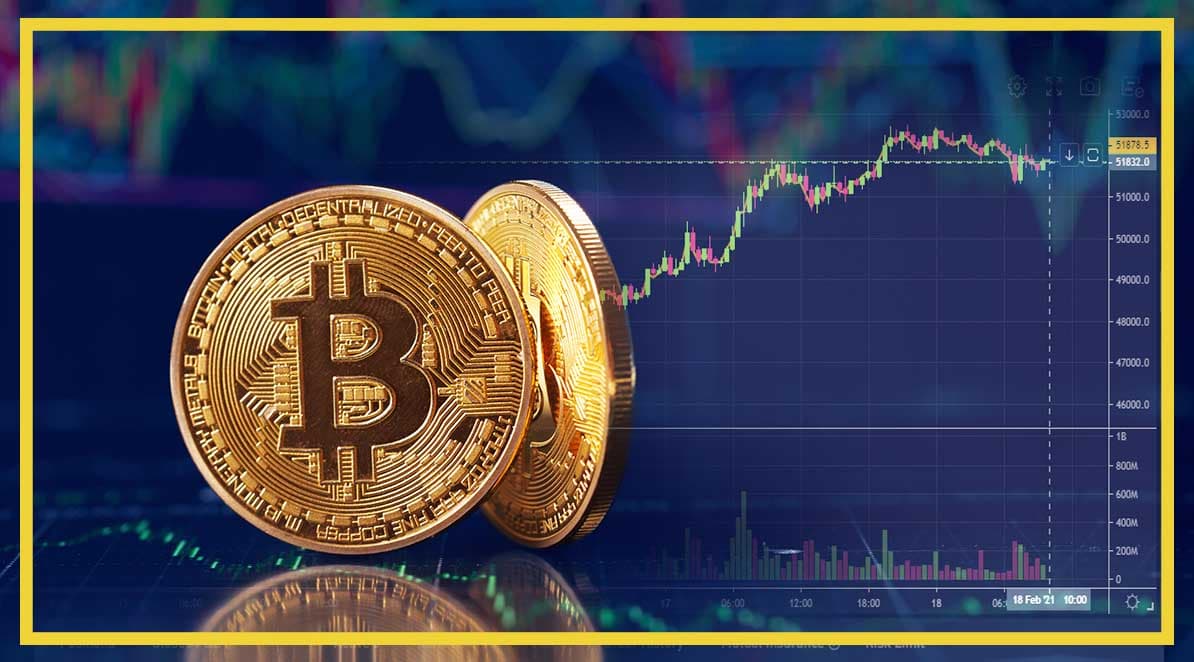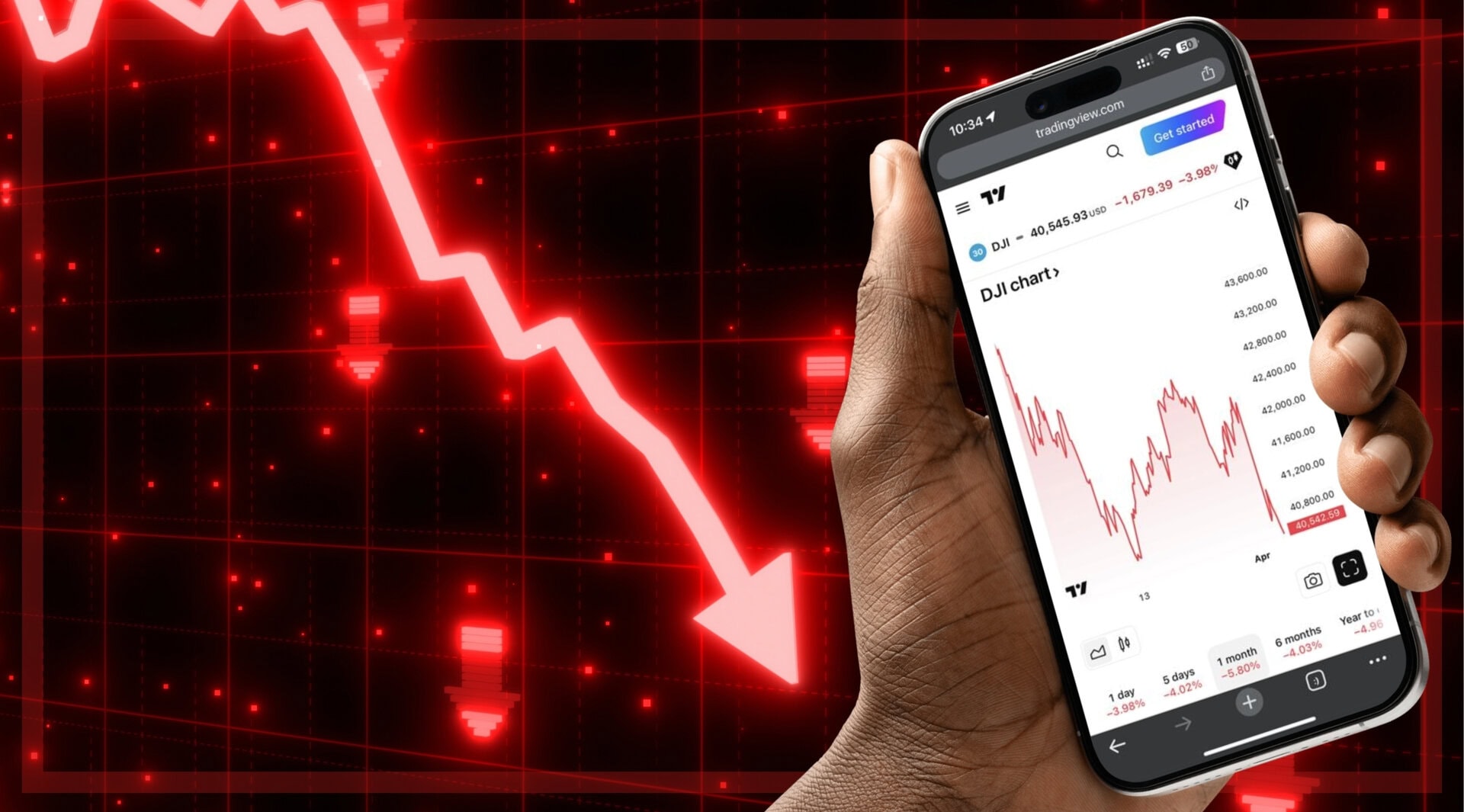As tensions rise in the Middle East, especially between Israel and Iran, the world is closely watching how global markets react. Traditionally, in times like these, investors flock to safe-haven assets — reliable options that can weather the storm. Gold has always been a go-to, and in 2024, it’s proving its worth again by surging to nearly $2,500 per ounce, with some forecasts predicting it could reach up to $2,700 by the end of the year. Bitcoin, often referred to as “digital gold,” has taken a 3.75% dip over the last 24 hours, prompting many to question whether it can perform when the going gets tough.
Demand for #gold surged to its highest in more than a decade in 2022, fuelled by “colossal” central bank purchases that underscored the safe haven asset’s appeal during times of geopolitical upheaval.https://t.co/gt1hyeGRhi
— #DisruptionBanking (@DisruptionBank) January 31, 2023
Bitcoin has long been praised for its potential as a decentralized alternative to traditional financial assets. However, when looking at its recent price swings, it’s clear that volatility is still a major issue. While gold has steadily risen by about 12% this year, Bitcoin’s performance has — as is common — been filled with up-and-down price swings. This contrast raises critical questions about Bitcoin’s reliability as a safe-haven asset during geopolitical crises.
Once again, Bitcoin is tanking on Middle East geopolitical worries, which confirms my assertion that "Unlike Gold, Bitcoin is Not a Safe-Haven":https://t.co/PzPHSF2C8f$BTC $GLD pic.twitter.com/sPwVjxf7QO
— Jesse Colombo (@TheBubbleBubble) October 7, 2024
Bitcoin’s Volatility in Times of Crisis
Bitcoin’s notorious volatility was again on full display during the current Middle East conflict. In just 24 hours, on October 3, the cryptocurrency dropped approximately 8.4%, from $66,000 to $60,450, further emphasizing concerns over its unpredictability. Unlike gold, which thrives in times of crisis, Bitcoin’s price can swing wildly, making it a much riskier option for those seeking stability. While gold has climbed consistently, Bitcoin has seen huge gains followed by sharp corrections throughout 2024.
Michael Sonnenshein, CEO of Grayscale Investments, explains, “Bitcoin’s volatility is a double-edged sword. While it offers significant upside potential, it also poses substantial risks, especially during geopolitical upheavals.” Peter Schiff, CEO of Euro Pacific Capital and a known Bitcoin critic, adds, “Bitcoin’s inherent volatility makes it a risky bet during geopolitical crises. Unlike gold, which has a stable track record, Bitcoin’s price can swing wildly, making it less reliable as a safe-haven asset.”
Bitcoin is not a safe haven against geopolitical tensions, says Standard Chartered – https://t.co/TQZnU6bAaa
— TheChainTimes (@thechaintimes) October 3, 2024
Bitcoin isn’t going to … pic.twitter.com/EBkBsBY4gA
This is not the first time Bitcoin’s safe-haven status has been called into question. While offering the promise of decentralized financial independence, the cryptocurrency also carries the burden of dramatic price swings, making it less dependable for those seeking shelter during storms. While Bitcoin’s advocates argue that it remains a digital store of value, its volatility poses a significant roadblock to achieving true stability. In 2024 alone, we’ve seen Bitcoin’s correlation with traditional financial markets increase, eroding its role as an independent hedge.
For example, earlier in 2024, when tensions first started escalating in the Middle East, Bitcoin initially saw a surge in value, reaching new highs of up to $73,000 in March. However, this was followed by a rapid correction, with prices falling below $63,000 by May, leaving many investors nervous. Gold, on the other hand, continues to climb steadily, with no such sharp reversals.
Thus, Bitcoin’s erratic behavior in such times is well-documented. Take the Russia-Ukraine conflict in early 2022 as another example. During that period, Bitcoin’s price initially spiked, reaching close to $45,000 in early March 2022. However, it experienced significant volatility, with prices dropping to around $36,370 by late February. This fluctuation left many investors on edge as they navigated the uncertain market conditions. The reality is that while Bitcoin can sometimes behave like a hedge, its unpredictable nature often makes it unreliable when the world faces uncertainty.
Gold’s Proven Stability Over Time
Meanwhile, gold is doing what it does best — offering a safe place for investors’ money when uncertainty hits. Not only has gold surged to $2,658.20 per ounce, but other traditional commodities like silver and oil are also climbing. Silver prices have increased by approximately 1.4% this year, while oil prices are on the rise, driven in part by concerns over supply disruptions due to the Middle East conflict. Meanwhile, Bitcoin’s erratic performance highlights the obvious difference between digital assets and the physical commodities market.
Gold might be heading for $1975 / ounce this week. Is it time to return to the Safe Haven that is Gold?https://t.co/pbculkiva1
— #DisruptionBanking (@DisruptionBank) May 31, 2021
Jeffrey Gundlach, CEO of DoubleLine Capital, highlights gold’s appeal: “Gold has a track record that spans millennia. It’s a proven store of value, especially when the world is in turmoil.” Ray Dalio, founder of Bridgewater Associates, echoes this, stating, “Gold’s performance during times of uncertainty is unmatched. Its ability to retain value when other assets falter is why it remains a cornerstone of any diversified portfolio.”
Historically, gold has remained a safe-haven asset during almost every global crisis. Even in the 2008 financial meltdown, gold started at around $840.75 per ounce, peaked at $1,004.30 in March, and ended the year at approximately $865.00 per ounce. This kind of resilience is what makes gold the top choice for cautious investors.
Institutional Investors Are Playing It Safe
Institutional investors, who often set the tone for broader market trends, seem to be noticing the difference between Bitcoin and traditional commodities. In 2024, they’ve become more cautious with their Bitcoin investments. Some are shifting their funds into safer assets like gold and oil, while others are waiting to see if Bitcoin can prove its stability.
Goldman says #Bitcoin’s rising popularity doesn’t endanger #Gold: Gold and digital gold can coexist: "In our view, Bitcoin is the retail reflation trade while gold is a defensive asset with long-term real capital preservation," Goldman says. pic.twitter.com/eOd2bUfUhG
— Holger Zschaepitz (@Schuldensuehner) December 18, 2020
Catherine Wood, CEO of ARK Invest, notes, “Regulatory clarity is crucial for institutional adoption. As regulations evolve, so will the strategies of institutional investors.” Larry Fink, CEO of BlackRock, adds, “Institutional investors are still in the early stages of understanding Bitcoin. Regulatory clarity and market maturity will be key factors in determining its long-term viability as a safe-haven asset.”
This year, institutional inflows into Bitcoin-focused funds have increased significantly, with Bitcoin ETFs seeing nearly $2 billion in inflows in a single week in June 2024. At the same time, investments in gold ETFs have surged, with gold prices hitting an all-time high in September 2024. This reflects a growing preference for more stable assets amid rising geopolitical risks and new regulations in markets like the U.S. and EU.
Looks as if retail investors shifting from #Gold to #Bitcoin. Bitcoin funds saw an inflow of $10.6bn YTD vs. an outflow of $7.6bn for physical gold ETFs. BUT: Acc to JPM, this outflow trend does not reflect an aversion to Gold by private investors such as individuals & family… pic.twitter.com/AibNGQwNu5
— Holger Zschaepitz (@Schuldensuehner) March 14, 2024
One of Bitcoin’s early appeals was its low correlation to traditional financial markets, offering portfolio diversification. However, that narrative is changing. Since 2019, Bitcoin’s correlation with traditional markets has grown, particularly with the S&P 500. The correlation between Bitcoin and the S&P 500 has fluctuated, reaching a high of approximately 0.6 by 2022, according to various sources. This growing correlation means that Bitcoin may no longer act as an independent hedge during times of crisis, as it once did.
Mati Greenspan, founder of Quantum Economics, points out, “Bitcoin’s growing correlation with traditional markets is a sign of its maturation. However, it also means that it may not always act as a hedge during market downturns.“ Anthony Pompliano, co-founder of Morgan Creek Digital, adds, “While Bitcoin’s increasing correlation signifies acceptance, it also means that its role as a diversification tool may diminish in times of global turmoil.”
Throughout the COVID-19 pandemic in 2020, Bitcoin’s price movement exhibited an increased correlation with traditional financial assets, including stocks and bonds. This shift suggests that Bitcoin may be evolving away from its original role as a safe-haven asset, leaving investors to question its future reliability during economic uncertainty.
Where is Bitcoin Headed as a Safe-Haven?
All of this raises an important question: Can Bitcoin truly become a safe-haven asset, or is it too volatile to play that role? Right now, the answer remains unclear. Bitcoin’s decentralized nature still appeals to many, but its unpredictable price movements make it hard for investors to fully trust it during crises. On the horizon, the geopolitical situation and ongoing regulatory changes will play a key role in shaping Bitcoin’s future.
Is the Crypto Market’s Safe Haven Narrative Crumbling Amid Geopolitical Tensions?
— D3W (@dark3web1) October 4, 2024
Recent events have shaken the crypto world. Following Iran’s missile strike on Israel, Bitcoin plummeted to $60,200—a sharp 6% drop from its recent highs. In just 24 hours, over $523 million was…
Nouriel Roubini, professor of economics at NYU, is skeptical, stating, “The jury is still out on Bitcoin’s role as a haven. Its future will depend on how it navigates regulatory landscapes and market dynamics.” On the other hand, Mike Novogratz, CEO of Galaxy Digital, is more optimistic, suggesting, “As the market matures and regulatory frameworks solidify, we may see Bitcoin’s role in global finance evolve significantly.”
Meltem Demirors, Chief Strategy Officer at CoinShares, also weighed in, stating, “The ongoing geopolitical tensions will be a litmus test for Bitcoin. How it performs in the face of these challenges will shape investor sentiment and its positioning in the financial landscape.”
Bitcoin’s journey in global finance is still evolving, and while it’s exciting to watch, its ability to act as a reliable safe-haven asset during turbulent times remains uncertain. The coming weeks and months will tell whether Bitcoin can shake off its volatility and step into a more stable role or whether traditional assets like gold will continue to outshine it in moments of crisis.
Author: Ayanfe Fakunle
The editorial team at #DisruptionBanking has taken all precautions to ensure that no persons or organisations have been adversely affected or offered any sort of financial advice in this article. This article is most definitely not financial advice.















